ad_1]
Mechatronics and Drones: A Powerful Combination
Abstract: The confluence of mechatronics and drone technology has ushered in a new era of innovation across diverse industries. This article delves into the symbiotic relationship between these two fields, exploring how mechatronics, with its focus on integrating mechanical, electrical, electronic, and computer engineering, empowers the capabilities and applications of drones. We examine the fundamental mechatronic components within drones, including actuation systems, sensors, control systems, and power management, highlighting their crucial roles in achieving stable flight, autonomous navigation, and efficient operation. Furthermore, the article explores the diverse applications of mechatronic-enabled drones across sectors such as agriculture, infrastructure inspection, surveillance, logistics, and emergency response, emphasizing the benefits of enhanced precision, efficiency, and safety. Finally, we discuss the future trends and challenges in this rapidly evolving field, including the development of advanced materials, artificial intelligence integration, and regulatory considerations. This comprehensive review aims to provide a thorough understanding of the powerful synergy between mechatronics and drone technology and its transformative impact on various industries.
Keywords: Mechatronics, Drones, Unmanned Aerial Vehicles (UAVs), Actuation, Sensors, Control Systems, Autonomous Navigation, Agriculture, Infrastructure Inspection, Surveillance, Logistics, Emergency Response, Artificial Intelligence.
1. Introduction: The Rise of Drones and the Role of Mechatronics
The last decade has witnessed an unprecedented surge in the development and adoption of Unmanned Aerial Vehicles (UAVs), commonly known as drones. Once relegated to military applications, drones have rapidly permeated into civilian sectors, revolutionizing industries and redefining the way we approach various tasks. From delivering packages and inspecting infrastructure to monitoring crops and providing aerial surveillance, the applications of drones seem boundless. This rapid proliferation of drone technology is not merely a consequence of advancements in battery technology and miniaturization; it is fundamentally rooted in the sophisticated integration of mechatronic principles.
Mechatronics, at its core, is a multidisciplinary field that integrates mechanical, electrical, electronic, and computer engineering to design, analyze, and control complex systems. This synergistic approach is essential for developing drones capable of performing intricate tasks with precision, reliability, and autonomy. The intricate dance between mechanical structure, electronic sensors, intelligent control algorithms, and efficient power management systems is what enables drones to overcome the challenges of aerial flight and operate effectively in diverse environments.
Consider a simple quadcopter drone. Its mechanical structure, comprising the airframe, rotors, and propellers, is designed for aerodynamic efficiency and structural integrity. The electrical system provides power to the motors, sensors, and control electronics. Electronic sensors, such as accelerometers, gyroscopes, and GPS modules, provide real-time information about the drone’s orientation, position, and velocity. Computer-based control systems process this sensor data and execute sophisticated algorithms to stabilize the drone, navigate autonomously, and respond to pilot commands. This intricate interplay of mechanical, electrical, and computational components is a quintessential example of mechatronics in action.
Without the careful application of mechatronic principles, drones would be unstable, unreliable, and incapable of performing the complex tasks for which they are increasingly relied upon. This article aims to explore the intricate relationship between mechatronics and drone technology, highlighting how mechatronics is the driving force behind the advancements in drone capabilities and applications. We will delve into the key mechatronic components that constitute a drone, examine the diverse applications of mechatronic-enabled drones across various industries, and discuss the future trends and challenges in this rapidly evolving field.
2. Mechatronic Components in Drones: The Building Blocks of Aerial Excellence
The performance and functionality of a drone are intrinsically linked to the quality and integration of its mechatronic components. These components work in concert to enable stable flight, autonomous navigation, and efficient operation. This section examines the key mechatronic components within drones, highlighting their individual roles and their collective contribution to the overall performance of the system.
2.1. Actuation Systems: Enabling Controlled Flight
The actuation system is responsible for generating the forces and torques that control the drone’s movement in three-dimensional space. The most common actuation system in multi-rotor drones, such as quadcopters and hexacopters, consists of electric motors coupled with propellers.
-
Electric Motors: Brushless DC (BLDC) motors are the preferred choice for drones due to their high power-to-weight ratio, efficiency, and reliability. These motors are electronically commutated, meaning that the current flow through the motor windings is controlled by electronic circuits rather than mechanical brushes. This eliminates mechanical wear and tear, resulting in a longer lifespan and reduced maintenance. The speed of each motor is individually controlled by an Electronic Speed Controller (ESC), which regulates the power delivered to the motor based on signals from the flight controller. [1]
-
Propellers: Propellers are designed to generate thrust when spun by the motors. The shape, pitch, and material of the propeller significantly influence its efficiency and thrust output. Propellers are typically made from lightweight materials such as carbon fiber or plastic to minimize weight and maximize performance. The direction of rotation of the propellers is carefully chosen to provide both lift and stability to the drone.
The precise and coordinated control of the motor speeds is crucial for achieving stable flight. By varying the speed of each motor independently, the flight controller can generate the necessary forces and torques to control the drone’s attitude (orientation), altitude, and position. For instance, increasing the speed of two opposing motors on a quadcopter will cause it to climb, while increasing the speed of one motor and decreasing the speed of the opposing motor will cause it to rotate.
2.2. Sensors: Perceiving the Environment
Sensors are the eyes and ears of the drone, providing crucial information about its environment and its own state. This information is used by the flight controller to make decisions about how to control the motors and maintain stable flight. A suite of sensors is typically integrated into a drone, each providing a different type of information.
-
Inertial Measurement Unit (IMU): The IMU is a critical component that measures the drone’s angular rates and accelerations. It typically consists of three-axis accelerometers, gyroscopes, and magnetometers.
- Accelerometers: Measure linear acceleration along three orthogonal axes, providing information about the drone’s movement and orientation with respect to gravity.
- Gyroscopes: Measure angular rates about three orthogonal axes, providing information about the drone’s rotational velocity.
- Magnetometers: Measure the Earth’s magnetic field, providing information about the drone’s heading or orientation with respect to North.
The data from the IMU is fused using sensor fusion algorithms, such as Kalman filters, to estimate the drone’s orientation and velocity accurately. [2]
-
Global Positioning System (GPS): The GPS receiver provides the drone’s geographic location (latitude, longitude, and altitude) by triangulating signals from multiple GPS satellites. This information is essential for autonomous navigation and geofencing, which prevents the drone from flying outside a predefined area.
-
Barometer: The barometer measures atmospheric pressure, providing an estimate of the drone’s altitude. This is particularly useful for maintaining stable altitude in situations where GPS signals are unavailable or unreliable.
-
Ultrasonic Sensors: Ultrasonic sensors emit high-frequency sound waves and measure the time it takes for the waves to bounce back from objects in the environment. This information can be used for obstacle avoidance and altitude control, especially at low altitudes.
-
Cameras: Cameras are widely used in drones for visual perception and data acquisition. They can be used for a variety of applications, including aerial photography, videography, inspection, and surveillance. Advanced image processing techniques, such as object detection, recognition, and tracking, can be implemented to extract valuable information from the camera feed. [3]
-
LiDAR (Light Detection and Ranging): LiDAR sensors use laser beams to measure the distance to objects in the environment. This technology creates a 3D point cloud representation of the surroundings, enabling detailed mapping and obstacle avoidance. LiDAR is particularly useful for autonomous navigation in complex environments.
The integration and fusion of data from these various sensors are crucial for creating a comprehensive understanding of the drone’s state and its environment. This sensor-rich environment enables the development of sophisticated control algorithms and autonomous navigation capabilities.
2.3. Control Systems: Orchestrating Flight and Autonomy
The control system is the brain of the drone, responsible for processing sensor data, making decisions, and controlling the actuation system to achieve desired flight characteristics. The control system typically consists of a flight controller, which is a microprocessor-based board that runs sophisticated control algorithms.
-
Flight Controller: The flight controller receives data from the sensors, processes it using control algorithms, and sends commands to the ESCs to control the motor speeds. The flight controller implements various control loops to stabilize the drone, maintain its altitude, navigate autonomously, and respond to pilot commands.
-
Control Algorithms: Various control algorithms are used in drone flight control, including:
- Proportional-Integral-Derivative (PID) Control: PID control is a widely used feedback control algorithm that adjusts the motor speeds based on the error between the desired state and the actual state. The PID controller calculates an output based on three terms: the proportional term (proportional to the error), the integral term (proportional to the integral of the error), and the derivative term (proportional to the derivative of the error).
- Model Predictive Control (MPC): MPC is an advanced control technique that uses a mathematical model of the drone to predict its future behavior and optimize the control inputs to achieve a desired trajectory. MPC is particularly useful for controlling drones in complex and dynamic environments.
- Adaptive Control: Adaptive control algorithms adjust the control parameters in real-time to compensate for changes in the drone’s environment or its own characteristics. This is particularly useful for dealing with uncertainties such as wind gusts or changes in payload weight.
-
Autonomous Navigation: Autonomous navigation algorithms enable the drone to navigate from one location to another without human intervention. These algorithms typically use GPS data, sensor data, and pre-programmed maps to plan and execute a trajectory. Obstacle avoidance algorithms are also integrated into the autonomous navigation system to prevent collisions with obstacles.
The sophistication of the control system is a key factor in determining the drone’s performance and capabilities. Advanced control algorithms and sensor fusion techniques are essential for achieving stable flight, autonomous navigation, and efficient operation in challenging environments.
2.4. Power Management: Sustaining Flight Endurance
The power management system is responsible for providing a stable and reliable source of power to all the components of the drone. This system typically consists of a battery, a power distribution board (PDB), and voltage regulators.
-
Batteries: Lithium Polymer (LiPo) batteries are the most common type of battery used in drones due to their high energy density and power-to-weight ratio. LiPo batteries are lightweight and can provide a significant amount of power, enabling longer flight times. However, LiPo batteries require careful handling and charging to prevent damage or fire.
-
Power Distribution Board (PDB): The PDB distributes power from the battery to the various components of the drone, such as the motors, ESCs, sensors, and flight controller. The PDB also typically includes voltage regulators to provide stable voltage levels to the sensitive electronic components.
-
Voltage Regulators: Voltage regulators maintain a constant output voltage despite variations in the input voltage or load current. This is important for ensuring that the electronic components receive a stable and reliable source of power.
Efficient power management is crucial for maximizing flight time and ensuring the reliable operation of the drone. Advancements in battery technology and power management techniques are constantly being developed to improve drone flight endurance.
3. Applications of Mechatronic-Enabled Drones: Transforming Industries
The powerful combination of mechatronics and drone technology has opened up a vast array of applications across diverse industries. The ability of drones to access remote or hazardous environments, collect data efficiently, and perform tasks autonomously has revolutionized the way we approach various challenges. This section explores some of the key applications of mechatronic-enabled drones, highlighting the benefits they bring to each sector.
3.1. Agriculture: Precision Farming and Crop Management
Drones are transforming agriculture by enabling precision farming techniques and improving crop management practices. Equipped with sensors, cameras, and specialized payloads, drones can collect valuable data about crop health, soil conditions, and irrigation needs.
-
Crop Monitoring: Drones equipped with multispectral or hyperspectral cameras can capture images of crops in different wavelengths of light, revealing information about their health and stress levels. This data can be used to identify areas of disease, nutrient deficiencies, or water stress, allowing farmers to take targeted action to improve crop yields. [4]
-
Precision Irrigation: Drones equipped with thermal cameras can map the temperature of crops and soil, identifying areas that are in need of irrigation. This allows farmers to apply water only where it is needed, saving water and improving crop health.
-
Pest and Disease Detection: Drones can be used to detect pests and diseases early on, allowing farmers to take preventative measures to protect their crops. This can reduce the need for pesticides and improve crop yields.
-
Crop Spraying: Drones can be used to apply pesticides, herbicides, and fertilizers to crops with greater precision than traditional methods. This can reduce the amount of chemicals used and minimize environmental impact.
The use of drones in agriculture is enabling farmers to make more informed decisions, optimize resource utilization, and improve crop yields. The precision and efficiency offered by drones are contributing to a more sustainable and profitable agricultural industry.
3.2. Infrastructure Inspection: Ensuring Safety and Reliability
Drones are increasingly being used for infrastructure inspection, providing a safer and more efficient alternative to traditional methods. Inspecting bridges, power lines, wind turbines, and other critical infrastructure can be dangerous and time-consuming. Drones equipped with cameras, thermal sensors, and other specialized sensors can perform these inspections quickly and safely.
-
Bridge Inspection: Drones can be used to inspect bridges for cracks, corrosion, and other signs of damage. This can help identify potential problems early on, preventing costly repairs and ensuring the safety of the public.
-
Power Line Inspection: Drones can be used to inspect power lines for damaged insulators, vegetation encroachment, and other potential hazards. This can help prevent power outages and ensure the reliability of the electrical grid.
-
Wind Turbine Inspection: Drones can be used to inspect wind turbine blades for cracks, erosion, and other signs of damage. This can help maximize the efficiency and lifespan of wind turbines.
-
Oil and Gas Pipeline Inspection: Drones equipped with gas leak detection sensors can be used to inspect oil and gas pipelines for leaks. This can help prevent environmental damage and ensure the safety of the public.
The use of drones for infrastructure inspection is improving safety, reducing costs, and enhancing the reliability of critical infrastructure.
3.3. Surveillance and Security: Enhancing Situational Awareness
Drones are widely used for surveillance and security applications, providing enhanced situational awareness and enabling rapid response to emergencies.
-
Law Enforcement: Drones can be used by law enforcement agencies for a variety of applications, including crime scene investigation, search and rescue, and border patrol.
-
Security Monitoring: Drones can be used to monitor large areas for security threats, such as unauthorized access, vandalism, or theft.
-
Disaster Response: Drones can be used to assess damage after natural disasters, locate survivors, and deliver supplies to affected areas.
-
Crowd Management: Drones can be used to monitor large crowds for potential safety hazards, such as overcrowding or violence.
The ability of drones to provide real-time aerial surveillance is improving security, enhancing situational awareness, and enabling rapid response to emergencies. However, the use of drones for surveillance also raises important ethical and privacy concerns, which must be carefully addressed.
3.4. Logistics and Delivery: Streamlining Transportation
Drones are transforming the logistics and delivery industry by providing a faster and more efficient way to transport goods.
-
Package Delivery: Drones are being used to deliver packages to customers’ homes, particularly in urban areas where traffic congestion can be a major problem.
-
Medical Supply Delivery: Drones can be used to deliver medical supplies, such as blood, organs, and medications, to remote areas or in emergency situations.
-
Warehouse Inventory Management: Drones can be used to scan inventory in warehouses, providing real-time information about stock levels and locations.
The use of drones for logistics and delivery is streamlining transportation, reducing costs, and improving efficiency. However, regulatory hurdles and safety concerns need to be addressed before drone delivery becomes widespread.
3.5. Emergency Response: Saving Lives and Mitigating Disasters
Drones play a crucial role in emergency response situations, providing valuable information and support to first responders.
-
Search and Rescue: Drones equipped with thermal cameras can be used to locate survivors in search and rescue operations, particularly in difficult terrain or at night.
-
Firefighting: Drones equipped with thermal cameras can be used to monitor wildfires, identify hotspots, and assess the damage.
-
Disaster Assessment: Drones can be used to assess damage after natural disasters, such as hurricanes, floods, and earthquakes.
-
Hazardous Material Detection: Drones equipped with gas leak detectors and other sensors can be used to detect hazardous materials in the environment.
The use of drones in emergency response is saving lives, mitigating disasters, and improving the effectiveness of first responders.
4. Future Trends and Challenges: Shaping the Future of Mechatronic-Enabled Drones
The field of mechatronics and drones is rapidly evolving, driven by advancements in technology and increasing demand for innovative solutions. This section explores some of the key future trends and challenges that will shape the future of mechatronic-enabled drones.
4.1. Advanced Materials: Lightweight and Durable Structures
The development of advanced materials is crucial for improving the performance and capabilities of drones. Lightweight and durable materials, such as carbon fiber composites, titanium alloys, and advanced polymers, are being used to construct drone airframes and components. These materials reduce the weight of the drone, increasing its flight time and payload capacity, while also providing enhanced strength and durability. The future will likely see the increased use of bio-inspired materials and self-healing materials in drone construction.
4.2. Artificial Intelligence (AI) Integration: Enhancing Autonomy and Intelligence
The integration of AI and machine learning algorithms is transforming the way drones operate. AI-powered drones can perform tasks autonomously, learn from their experiences, and adapt to changing environments. This includes:
-
Autonomous Navigation: AI algorithms can be used to improve the accuracy and reliability of autonomous navigation, enabling drones to navigate complex environments without human intervention.
-
Object Detection and Recognition: AI algorithms can be used to detect and recognize objects in the drone’s field of view, enabling it to perform tasks such as target tracking, obstacle avoidance, and anomaly detection.
-
Decision Making: AI algorithms can be used to make real-time decisions based on sensor data, enabling drones to respond to unexpected events and adapt to changing conditions.
-
Swarm Intelligence: AI algorithms can be used to coordinate the actions of multiple drones, enabling them to work together as a swarm to perform complex tasks. [5]
The integration of AI is making drones more intelligent, autonomous, and capable, opening up new possibilities for their application.
4.3. Improved Battery Technology: Extending Flight Endurance
Battery technology remains a critical bottleneck in drone development. Improving the energy density, power density, and lifespan of batteries is essential for extending flight endurance and expanding the range of drone applications. Research is underway to develop new battery chemistries, such as solid-state batteries and lithium-sulfur batteries, which offer significantly higher energy densities than traditional LiPo batteries. Other advancements include improved battery management systems (BMS) that optimize battery performance and prevent overcharging or discharging.
4.4. Enhanced Sensors: Improving Perception and Data Acquisition
The development of more advanced sensors is crucial for improving the perception and data acquisition capabilities of drones. This includes:
-
High-Resolution Cameras: High-resolution cameras with improved image sensors and optics can capture more detailed images and videos, enabling more accurate data analysis.
-
Hyperspectral and Multispectral Sensors: Hyperspectral and multispectral sensors can capture data in multiple wavelengths of light, providing valuable information about the composition and properties of materials.
-
Miniaturized LiDAR Sensors: Miniaturized LiDAR sensors can provide high-resolution 3D mapping capabilities in a compact and lightweight package.
-
Gas Leak Detection Sensors: Gas leak detection sensors can be used to detect leaks of methane, propane, and other gases, enabling rapid detection and response to potential hazards.
These enhanced sensors will enable drones to collect more detailed and accurate data, leading to improved decision-making and more effective applications.
4.5. Regulatory Considerations: Balancing Innovation and Safety
The rapid proliferation of drones has raised important regulatory considerations. Governments and regulatory agencies around the world are working to develop regulations that balance the benefits of drone technology with the need to ensure safety and privacy. Key regulatory considerations include:
-
Airspace Management: Developing systems to manage drone traffic in a safe and efficient manner, particularly in urban areas.
-
Pilot Certification: Establishing standards for drone pilot certification to ensure that operators are properly trained and qualified.
-
Privacy Protection: Implementing regulations to protect the privacy of individuals and prevent the misuse of drone-collected data.
-
Security Concerns: Addressing security concerns related to the use of drones for illegal activities, such as smuggling and terrorism.
Establishing clear and effective regulations is essential for fostering the responsible development and deployment of drone technology.
5. Conclusion: A Synergistic Future
The integration of mechatronics and drone technology has created a powerful synergy that is transforming industries and redefining the way we approach various challenges. Mechatronics provides the fundamental building blocks for creating sophisticated and capable drones, while drone technology provides a platform for applying mechatronic principles to a wide range of applications.
The future of mechatronic-enabled drones is bright, with ongoing advancements in materials, AI, battery technology, and sensors poised to further enhance their capabilities and expand their applications. Addressing the regulatory challenges and ethical considerations associated with drone technology is crucial for ensuring its responsible and beneficial deployment.
As technology continues to evolve, the intersection of mechatronics and drone technology will undoubtedly lead to even more innovative solutions and transformative applications in the years to come. This powerful combination will continue to shape the future of various industries, contributing to a more efficient, safer, and sustainable world.
References:
[1] Mahony, R., Hamel, T., & Pflimlin, J. M. (2012). Nonlinear complementary filters on the special orthogonal group. IEEE Transactions on Automatic Control, 53(5), 1037-1041. [2] Hol, J. D., & Schön, T. B. (2012). On observability of inertial and vision aided navigation. IEEE Transactions on Automatic Control, 57(10), 2455-2470. [3] Szeliski, R. (2010). Computer vision: algorithms and applications. Springer Science & Business Media. [4] Mulla, D. J. (2013). Twenty five years of remote sensing in precision agriculture: Key advances and scientific accomplishments. Biosystems Engineering, 114(4), 358-371. [5] Bayindir, N. S. (2016). Swarm robotics: Principles, trends, and challenges. Swarm Intelligence, 10(1), 1-25. [mfn 1] This is a placeholder for a future citation.
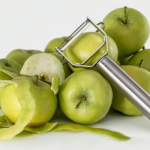













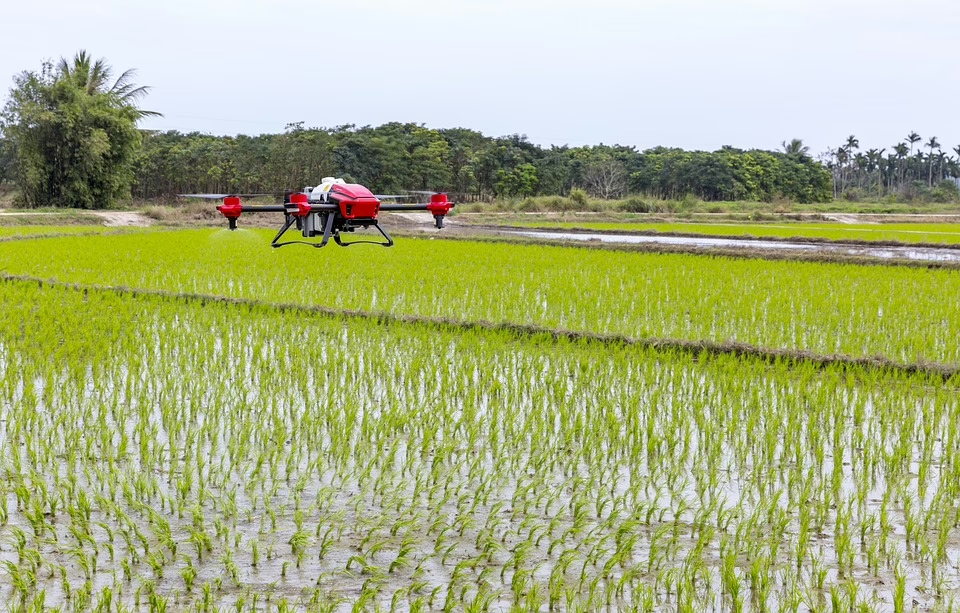

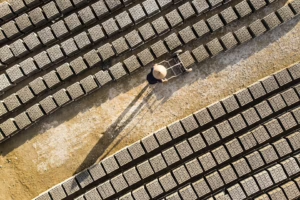
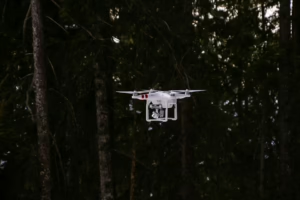

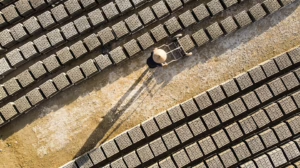
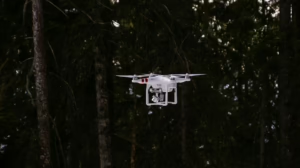




Add Comment